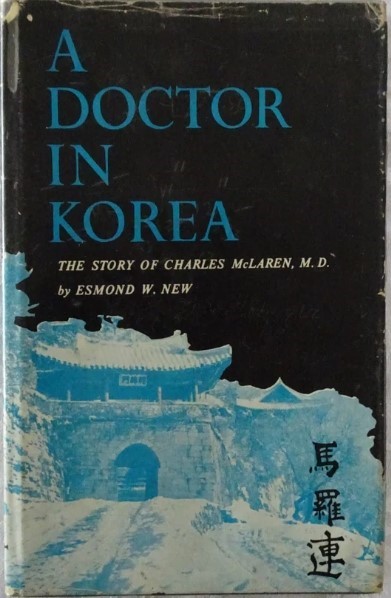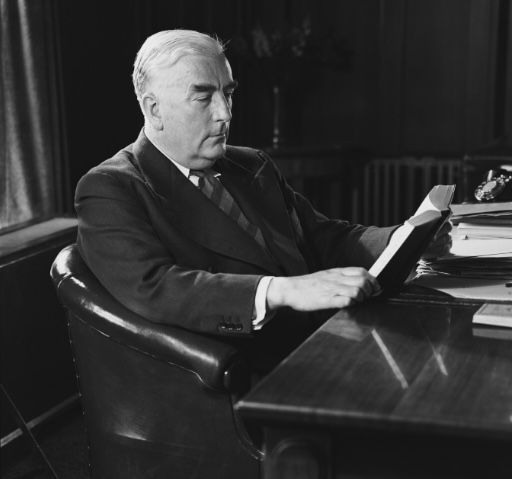Esmond W. New, A Doctor in Korea: The Story of Charles McLaren, M. D. (1958)
When the Korean War broke out in June of 1950, the Menzies Government was surprisingly reluctant to commit Australian ground troops to the conflict. Despite North Korea’s clear act of aggression, Australia’s strategic priority of containing the spread of communism, and the backing of the UN Security Council which called for friendly nations to assist in the defence of South Korea, our initial commitment was limited to support aircraft and two navy warships. Cabinet decided that Korea ‘represented only one phase of Russian aggression’, was comparatively remote from Australia, and that our immediate concern was the nearer communist threat posed by the Malayan Emergency.
Such concerns would ultimately be overlooked when Australia belatedly agreed to send ground troops on 26 July 1950, although notably acting PM Arthur Fadden and External Affairs Minister Percy Spender would make the decision while Menzies was unreachable on a boat travelling across the Atlantic Ocean. But what is remarkable about the initial distance-based justification for holding back is that Korea was nevertheless close enough to Australia to have its own direct link with the Menzies family – with Sir Robert even having a Korean cousin!
As the prime minister informed listeners in a radio broadcast a couple of weeks beforehand, his aunt Belle (Isabel or Isabella) Menzies had been attached to the Presbyterian Mission in Fusan, where she had endured some rough treatment at the hands of Japanese soldiers – reportedly during the Russo-Japanese conflict of 1904-5. Although just a quick aside in a discussion of pressing security matters, it turns out that Sir Robert or the at least the journalists elaborating on his statement, underplayed and slightly misunderstood her achievements.
Initially arriving on the Korean peninsula in 1891, Belle would spend a total of 33 years there engaging in charity work involving children’s education and care for local orphans. Peter Phillips has recorded that:
‘perhaps her most significant contribution to Korea and Korean culture was in the realm of women’s education. At that time the education of women in Korea was downplayed or neglected, and Belle, a great believer in the uplifting of women by education, and in education as a means to furthering the gospel of the Lord Jesus, established the Busanjin Ilsin Girl’s School and became its first principal. In 1910 Japan imposed an annexation treaty on Korea. Japanese colonial rule in Korea was oppressive, including the imposition by force of Shinto worship upon the population, including Christians. This oppression gave rise to many Korean resistance movements which culminated in the nationwide March 1st Movement of 1919. This movement was supported by the students and staff of the Busanjin Ilsin Girl’s School, and Belle Menzies, Margaret Davies and Daisy Hocking were arrested and detained. Belle Menzies was charged with destroying evidence, including burning a tai chi that she had made’
Belle retired a couple of years after this run-in with authorities, living out her final days in Ballarat. Such were her longstanding contributions that after she passed away in 1935, the locals erected a monument to her in Fusan, which was torn down by Japanese soldiers during the war, but re-erected at its conclusion. More recently in March of 2022 the Korean government granted her the Medal of Honour of the Republic of Korea, as an official recognition of her efforts. In a more personal testament Sir Robert’s parents appear to have named his younger sister Belle after her. And most touchingly of all, an orphan girl named Simpogee who Belle personally adopted took on the surname Min as a local take on Menzies. She went on to have a happy and healthy life, giving birth to four children and even emulating Belle in adopting someone from the Presbyterian mission, as letters sent to Sir Robert giving updates on her life attest.
For all her achievements, Belle was just one of a sizeable number of Australian Presbyterians who conducted significant missionary work in Korea in the late 19th and early 20th centuries. A phenomenon documented in A Doctor in Korea, a biography of the Tokyo-born but Melbourne educated Charles Inglis McLaren. Who worked for decades in Korean hospitals as a missionary of the Presbyterian Church of Victoria, before being interred upon Japan’s entry into World War II and fortuitously repatriated to Australia in November of 1942.
Even the book’s author Esmond New was himself a Presbyterian missionary who had spent time in Korea in the 1930s, before becoming a chaplain in the RAAF. A role in which he used his knowledge of northern Asia to work on intelligence duties, preparing information papers for the United States Army on aspects of Japanese culture. Later during the Korean War itself, New would use his fluency in the Korean language in a ‘daring and imaginative’ search for missing pilots whose planes had been shot down.
You might also like...
Sign up to our newsletter
Sign up for our monthly newsletter to hear the latest news and receive information about upcoming events.


